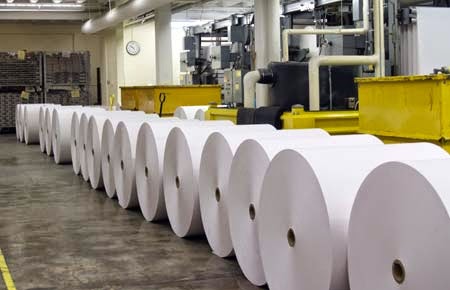Focus group on timber Industry in China
Background-PEST analysis
With the development of economic,
acceleration of civilization and improvement of infrastructure, the relative
timber industry in China is going through its prosperity. Wood is essential for
the development of national economy and people’s life. Timber is widely-used in
construction industry, furniture industry, paper-making industry and energy
industry etc. However, since China joint WTO and carried out the policies of
natural forests protection, the timber resource is extremely scarce. At the
same time, the price of raw material is incessantly rising, the processing
technology is undeveloped while the remarkable steady growth of people’s living
standard and resident disposable income is present. The sharp conflict between
supply and demand is inevitable. Obviously, timber industry is facing both
development obstacles and new opportunities in recent years.
Current Situation of Timber Market in China
Timber industry is a general name, which
refers to take the wood for the main processing objectby using of physical, chemical
processing means, and then processing wood into various wooden forest products
manufacturing. Wood is green and renewable, environment-friendly materials,
wood industry based on wood material have become the development of social
economy in the national economy, which occupies the irreplaceable position in
evergreen industry. Since with the development of reforming and opening up,
Chinese timber industry has achieved rapid development, China has become the world
literally timber industry superpower. On the account of low forest coverage
rate and the protection of forest district, businesses are gradually banned
logging in virgin forests to maintain harmonious ecological environment,
especially the Xing'an Mountains region. The timber field is significantly
reduced and hard to satisfy the demand of the market. Under the circumstances,
China strengthens the efforts to import timber. Data shows that the total
import volume reached 45.159 million cubic meters with the amount of $9.32
billion. As the increasing volume of timber import and the fluctuation of the
demand forms, timber industry is gradually changing as well. China imports timber
11.5 million cubic meters from New Zealand, about 25.47% of the total. New
Zealand becomes the biggest timber import state in China.
Influencing Factors on Demand and Supply of Timber Market in
China
Objective Factor
Over recent decades, China’s per capita
disposable income goes up with year-on-year growth of about 9 percent. It means
the people’s life mode transfer from subsistence mode to enjoyable mode. People
are pursuing the high quality living standard which will immensely promote the timber
demand.
Subjective Factor
Besides the objective factor, customer preference
is also a significant aspect. People can choose their wanted product as their
wishes. Consumer demand for the goods is positively correlated with the degree
of preference. Chinese would like to purchase the timber if their degree of
preference is high.
Timber Industry SWOT Analysis
In order to give more detailed information
about china timber industry, there is a SWOT analysis according to the strengths,
weaknesses, opportunities and treats.
In China, endogenous financing ability of
wood industry in light industry is weak. In 2008, the cost profit margin of the
rankings in 14 light industries of China, wood processing industry ranks the
fifth, while papermaking and paper products industry rank the seventh, furniture
manufacturing ranks eleventh. Among them, except wood processing cost slightly
is higher than the national industrial average profit margins, the costs of
profit margins furniture of manufacturing, papermaking and paper manufacturing
are below the average of national industry.
Due to the imperfect of capital market,
debt financing China timber industry is one of the main channels to raise
funds. But China timber industry liability structure is unreasonable, which cause
industry facing larger financing risk, therefore, optimizing liability
structure is the important problems must be solved for industry. Enterprise
should reduce the proportion of current liabilities into a reasonable range, in
order to reduce the financing risk. In determining the proportion of current
liabilities, enterprises should take cash flow as the criterion. Enterprise's short-term
debt should pay eventually by producing in the enterprise management, based on
cash flow of current liabilities, it is reasonable to ensure the level of
current liabilities. In determining the enterprise debt structure, enterprise
should repay the debt within one year less than or equal to the period of the business
cash flow, So, even in the difficulty time of financing enterprise, it also can
ensure the cash flow generated with business to return due debts, that is to
say to ensure adequate solvency.
China's imports of logs, lumber, woodchips
and pulp hit record levels in 2011, when its timber supply deficit surged more
than 30% to an estimated 152 million m3. Similarly, demand for timber in other
wood deficit countriesis also on the rise. While some countries clamber for
wood resources, concerns about deforestation have caused an increasing share of
the world's native forests to be set aside for conservation.
These global trends are increasing the
market's dependence on man-made forest plantations. Not surprisingly, an
increasing number of players in the timber industry are interested in
developing tree farms - often in new regions and with relatively unproven
species. This type of investment requires analysis that incorporates political
and economic factors, as well as, direct costs and biological growth rates.
Conclusions of the focus group
This report focuses on the background-pest
analysis, current situation of timber market in china, influencing factors on
demand and supply of timber market in china, timber industry SWOT analysis. It aims
at providing a better understanding about China timber industry.
By Daxue Consulting
See also:

No comments:
Post a Comment